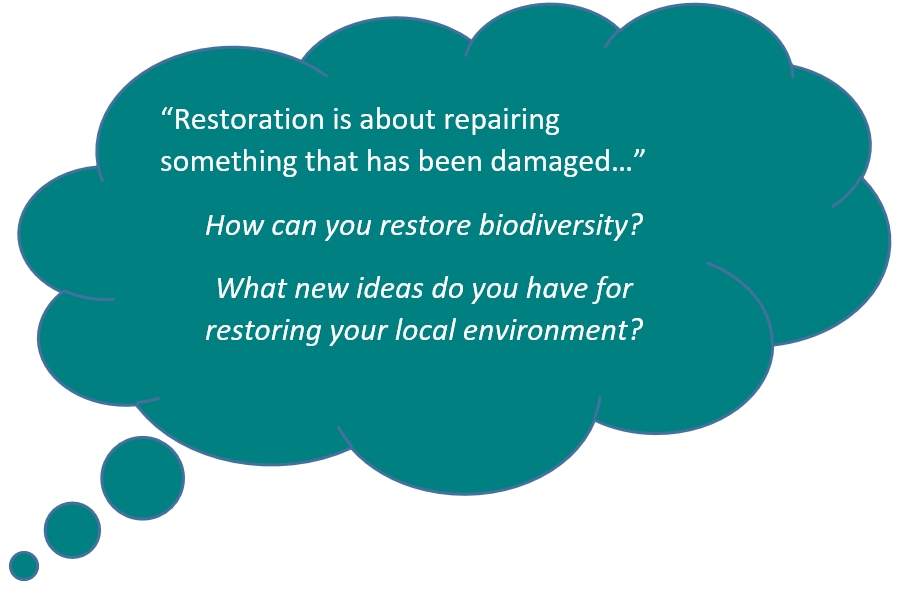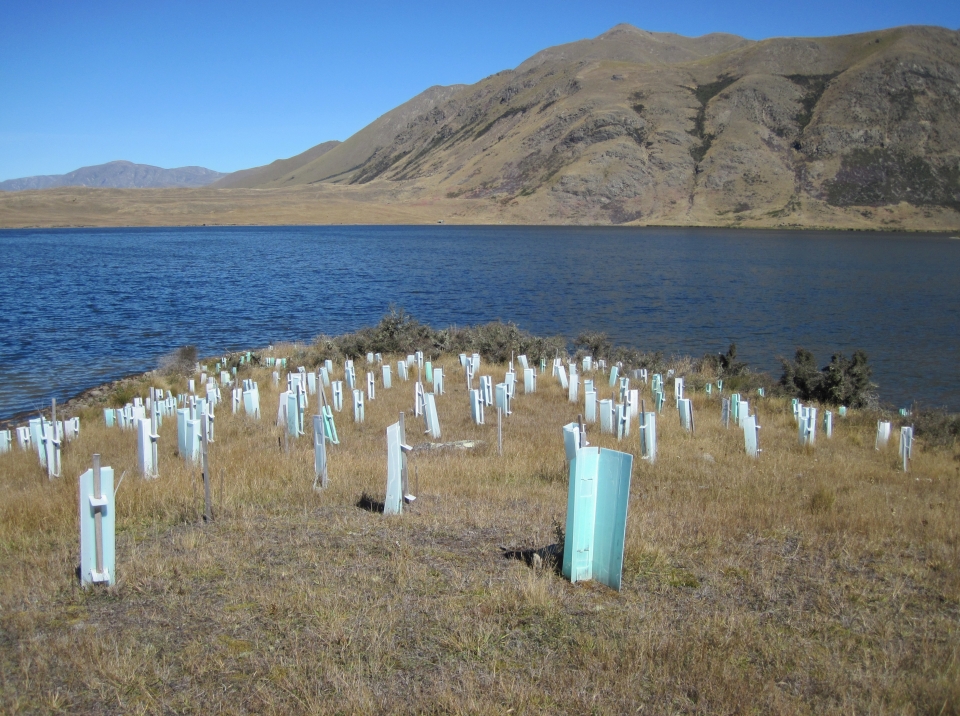How is biodiversity restored?
To restore biodiversity to an area the whole ecosystem needs to be restored.
Restoration is about helping something that has been damaged, degraded, or destroyed. Restoring biodiversity means assisting damaged or destroyed ecosystems. It usually involves bringing back lost species that are found naturally in the area. That is why it is important to identify what naturally lives in the area you want to restore.
As well as adding something back to an ecosystem, restoring biodiversity may also involve taking something away. This usually means removing unwanted plants and animals – known as weeds and pests.
Monitoring
Before you can restore biodiversity to an area you need to know what lives there and how healthy it is. A BioBlitz could be your first step. Further monitoring of species can be done over a longer period of time. Water quality and soil quality can be measured. You could also record what people do in the area and find out if human activity is affecting the health of the area.
Monitoring involves sampling and taking notes about:
- habitat information e.g. water temperature and clarity, air quality, human activities
- biological data e.g. numbers of organisms and presence or absence of animals and plants
- You could talk to local iwi and experts to find out more about the history of the area and how it may have changed over time.
Once you have completed monitoring it is time to take action.
Plants provide habitat for a wide variety of animals. Restoring vegetation can help restore wildlife and improve water quality.
Pioneering plant species
Some native plant varieties are called 'pioneer species'. Examples are mānuka, kānuka and tī kōuka/cabbage trees. They like starting out on bare ground and are hardy. These easy-to-grow plants can tolerate poor conditions. Planting a few pioneer species can encourage birds to bring in the seed of a wider variety of plants. This saves you the time and expense of growing them yourself. Pioneer species are also better adapted to the open sites where restoration planting is often done.
Ecosourcing seeds
Ideally, bush areas will regenerate naturally from falling seeds, or those carried in by wind or birds. But sometimes nature may need a helping hand through active restoration planting and seeding. This is especially so if the restoration is being done on land that was once farmed. Collecting seeds close to where they are to be planted is called eco-sourcing. It is an important part of a restoration project.
Why is ecosourcing important?
Ecosourced plants will be suited to local conditions and more likely to survive. They will also help maintain the area's unique local characteristics. Ecosourcing will avoid the risk of planting species which are not native to the local area and which could become invasive. Once you have planted an area you need to maintain the health of plants by removing any weeds. You may also need to protect plants from pests. This can be done by trapping predators and protecting plants from animals.

You can place cardboard around plants until they grow large enough to cope with animal browsing.
On this field trip, you will see how DOC staff and local school students are working together to help restore Ō Tū Wharekai.
Ready for a quiz? Try the Restoring Biodiversity interactive activity.




